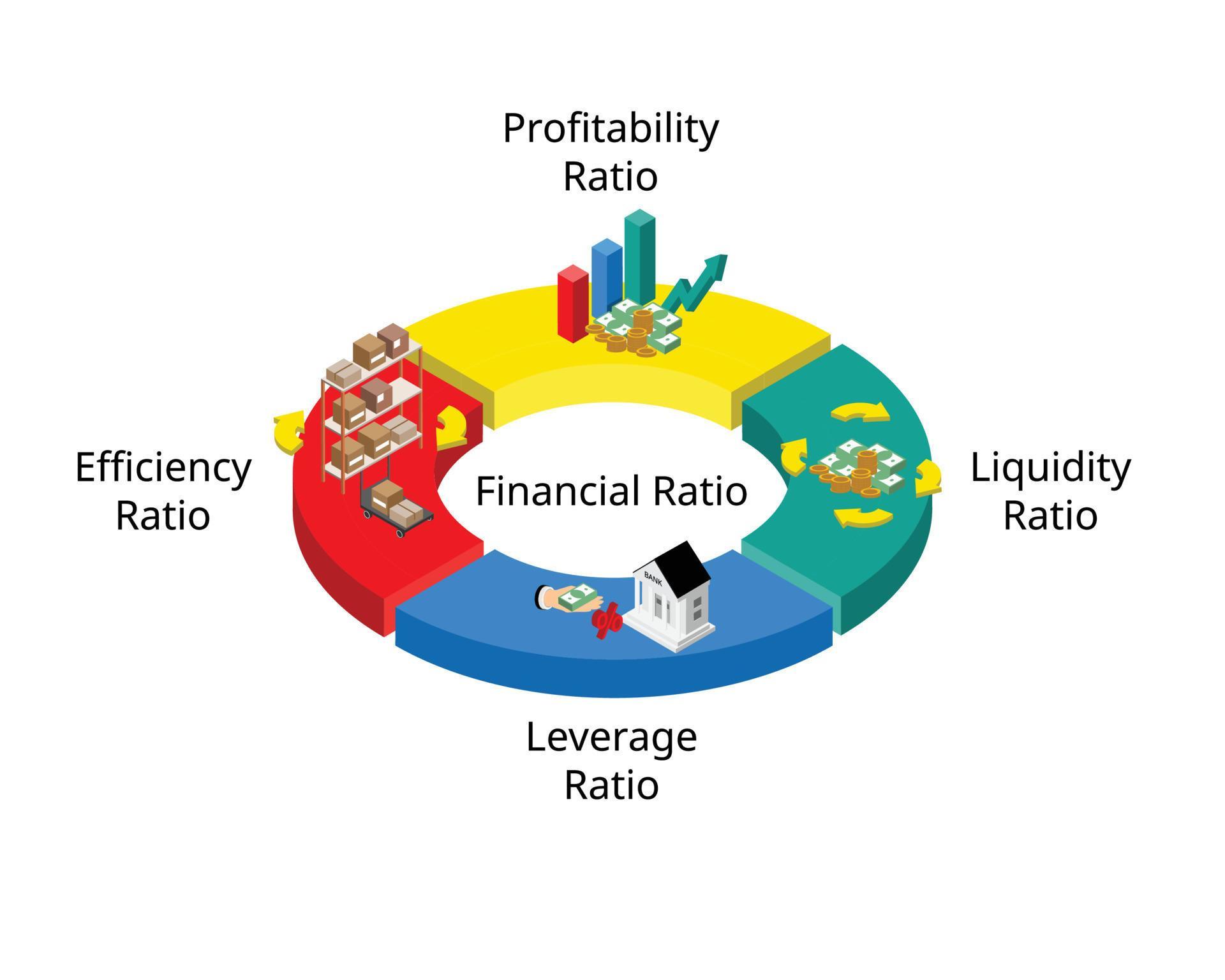
Debt ratios measure the debt of a company relative to various other figures and a company’s long-term ability to pay off its debt obligations. First, ratio analysis can be performed to track changes within a company’s financial health over time and predict future performance. Second, ratio analysis can be performed to compare results between competitors. Third, ratio analysis can be performed to strive for specific internally-set or externally-set benchmarks. Ratio analysis can help investors understand a company’s current performance and likely future growth. However, companies can make small changes that make their stock and company ratios more attractive without changing any underlying financial fundamentals.
Gross Profit Ratio
Liquidity, efficiency, and profitability ratios, compared with other businesses in your industry, can highlight any strengths and weaknesses you might have over your competition. It is also important to compare your ratios over time in order to identify trends. The income statement contains information about company sales, expenses, and net income.
Net and Gross Profit Margin Calculator
The calculations do not infer that the company assumes any fiduciary duties. The calculations provided should not be construed as financial, legal or tax advice. In addition, such information should not be relied upon as the only source of information. This information is supplied from sources we believe to be reliable but we cannot guarantee its accuracy.
What Are Some Examples of Liquid Assets?

Adam Hayes, Ph.D., CFA, is a financial writer with 15+ years Wall Street experience as a derivatives trader. Besides his extensive derivative trading expertise, Adam is an expert in economics and behavioral finance. Adam received his master’s in economics from The New School for Social Research and his Ph.D. from the University of Wisconsin-Madison in sociology. He is a CFA charterholder as well as holding FINRA Series 7, 55 & 63 licenses. He currently researches and teaches economic sociology and the social studies of finance at the Hebrew University in Jerusalem.
- Ratio analysis is a method of examining a company’s balance sheet and income statement to learn about its liquidity, operational efficiency, and profitability.
- Liquid assets include cash and anything that can be easily converted to cash.
- This category of ratios measures a company’s ability to generate profits from its overall revenue figures by considering expenses or equity.
- Profitability Ratios measure a company’s ability to generate profits from its overall revenue figures by considering expenses or equity.
- The Debt to Tangible Net Worth Ratio is a measure of a company’s financial leverage to the tangible asset value of owner’s equity.
- Both dividends and share repurchases are considered outlays of cash and can be found on the cash flow statement.
It indicates what proportion of equity and debt the company is using to finance its tangible assets. It indicates what proportion of equity and debt the company is using to finance its assets. Use the Asset turnover calculator above to calculate the asset turnover from your financial statements. Return on Common Equity measures a corporation’s profitability by revealing how much profit a company generates with the money shareholders have invested.
Profitability ratios are used to sift through revenue figures and calculate the company’s actual profits. Taken together over a period of time, the ratios provide a window into the company’s operations and priorities. Accounting Ratios are ratios used to analyze a company’s doubtful accounts and bad debt expenses business and current financial standing. The gross profit markup ratio looks at the gross profit compared to the cost of producing the product. The ratio can be used for both an individual product (if you have the figures) or from the Profit and Loss Account.
They are intended to help the management assess the effectiveness of the company’s pricing policy, stock carrying, and speed of stock turnover. Benchmarks show the trend of a ratio over time, or they could be industry averages for firms of a similar size, background, or other characteristics. The significant figures drop select box only determines rounding for the ratios themselves. Income from Leveraged Assets is the income generated by assets funded by borrowed debt.
It also provides an overview of earnings and the number of shares outstanding used to calculate earnings per share (EPS). These are some of the most popular data points that analysts use to assess a company’s profitability. Accounting ratios are used by businesses to measure profitability and efficiency.
Asset Turnover (Du Pont) measures a firm’s efficiency at using its assets to generate sales revenue, the higher the better. Working Capital Turnover measures the depletion of working capital to the generation of sales over a given period. This provides some useful information as to how effectively a company is using its working capital to generate sales. Fixed Asset Turnover measures the efficiency of fixed assets to generate profit.
The higher the number, the more efficient management’s use of fixed assets. Asset Turnover measures a firm’s efficiency at using its assets to generate sales revenue, the higher the better. Use the Return on Assets (Profitability Ratio) Calculator above to calculate the profitability ratio from your financial statements. Return on Assets is an indicator of how profitable a company is relative to its total assets. ROA gives an idea as to how efficient management is at using its assets to generate earnings.
